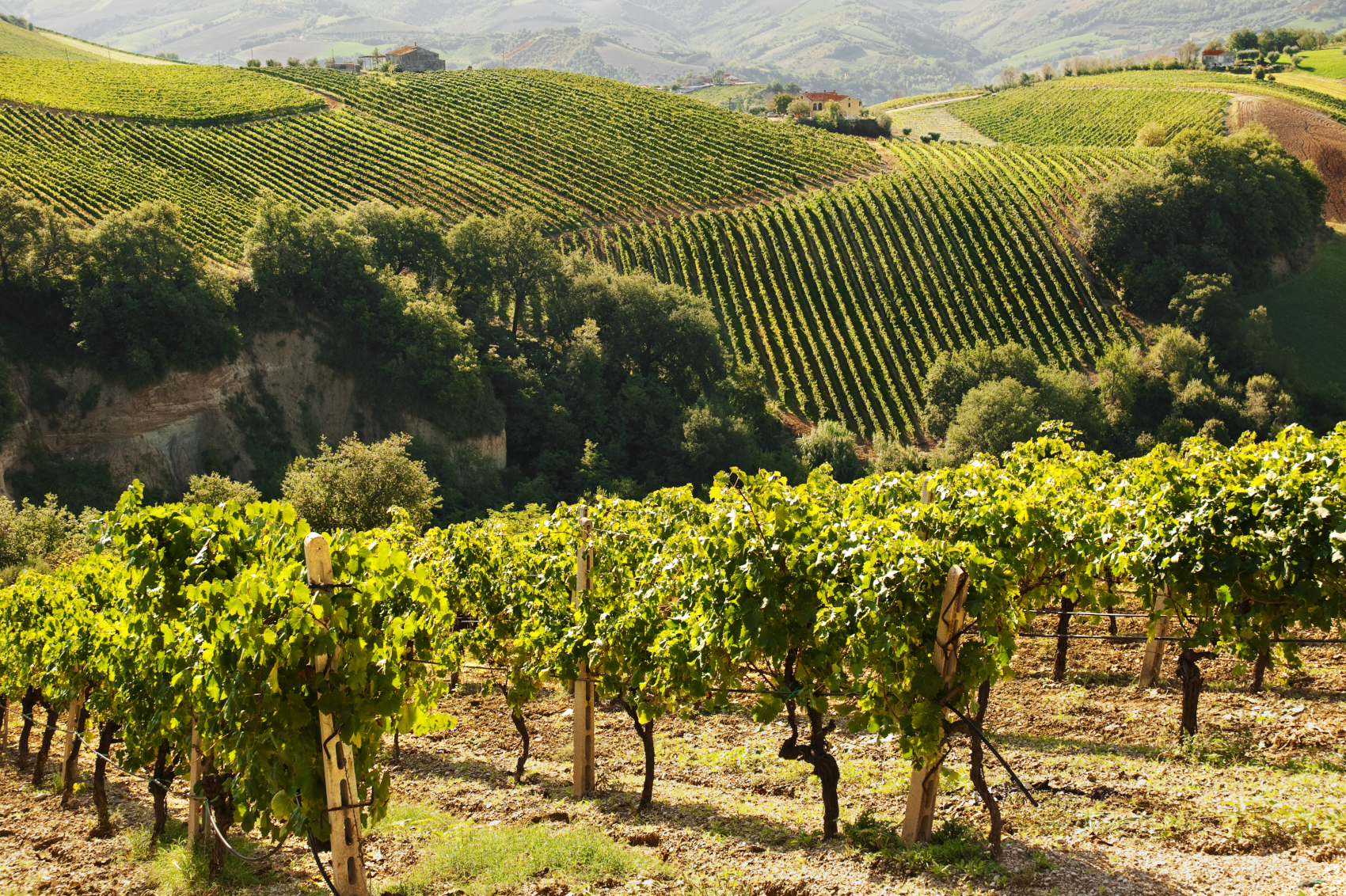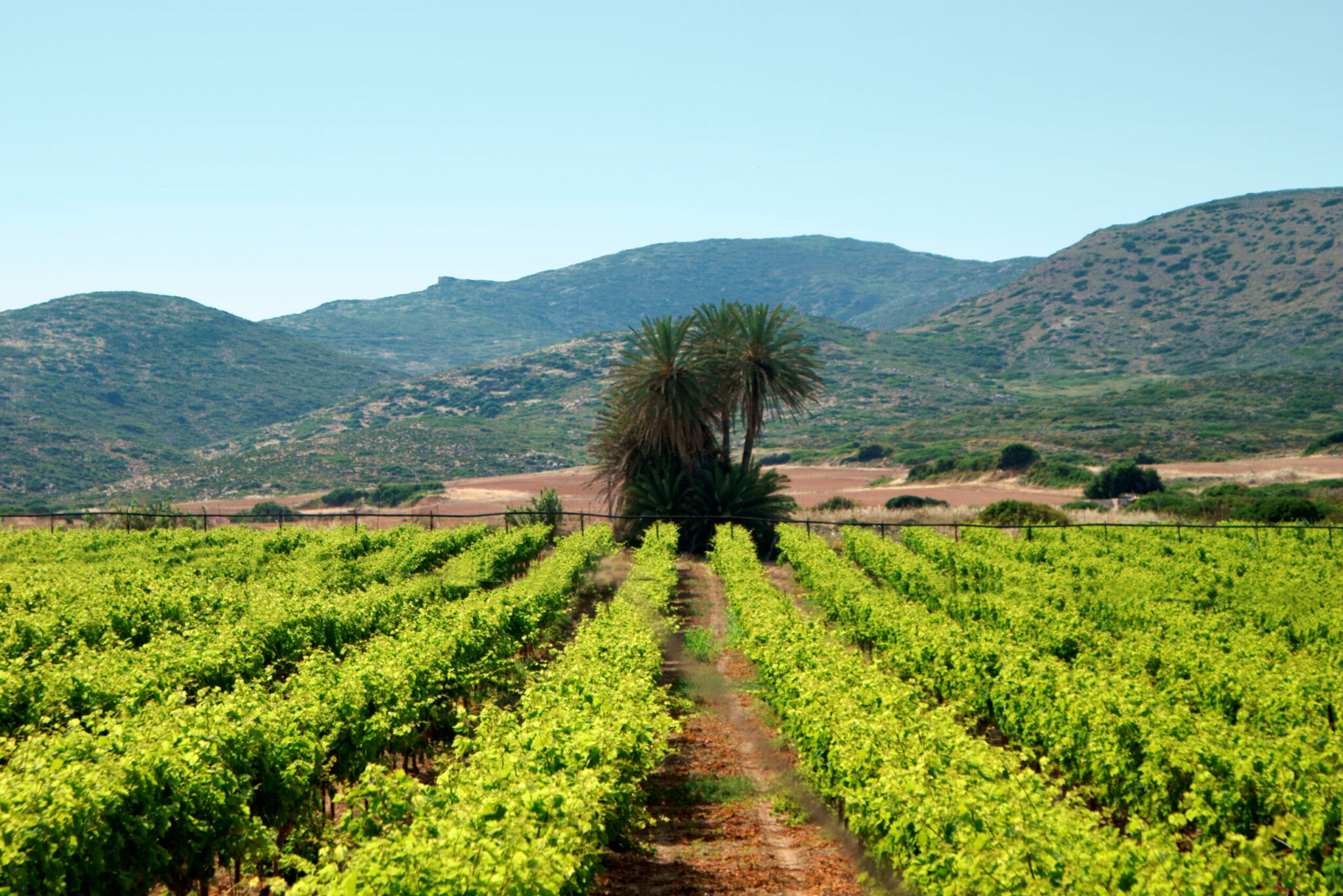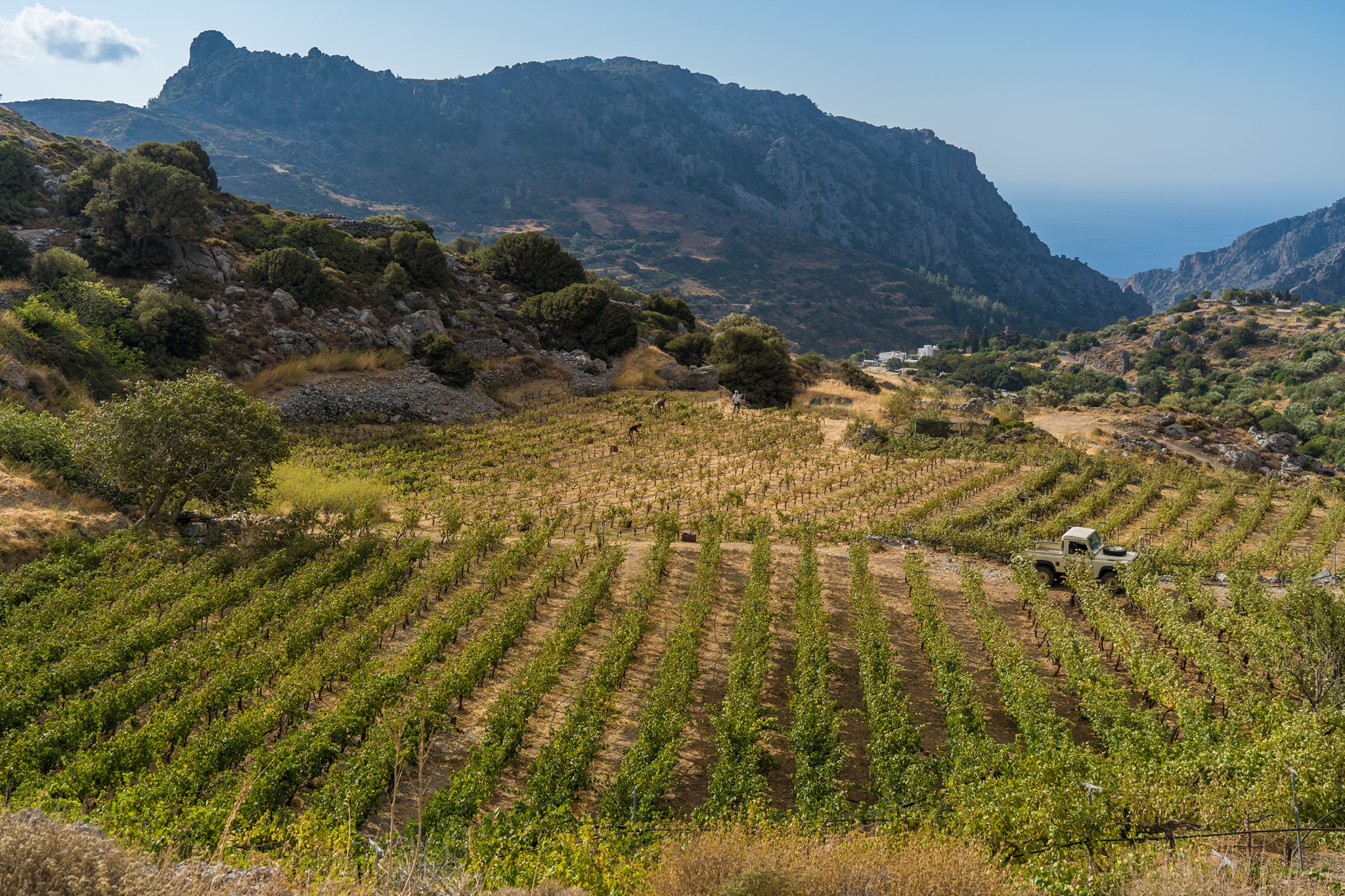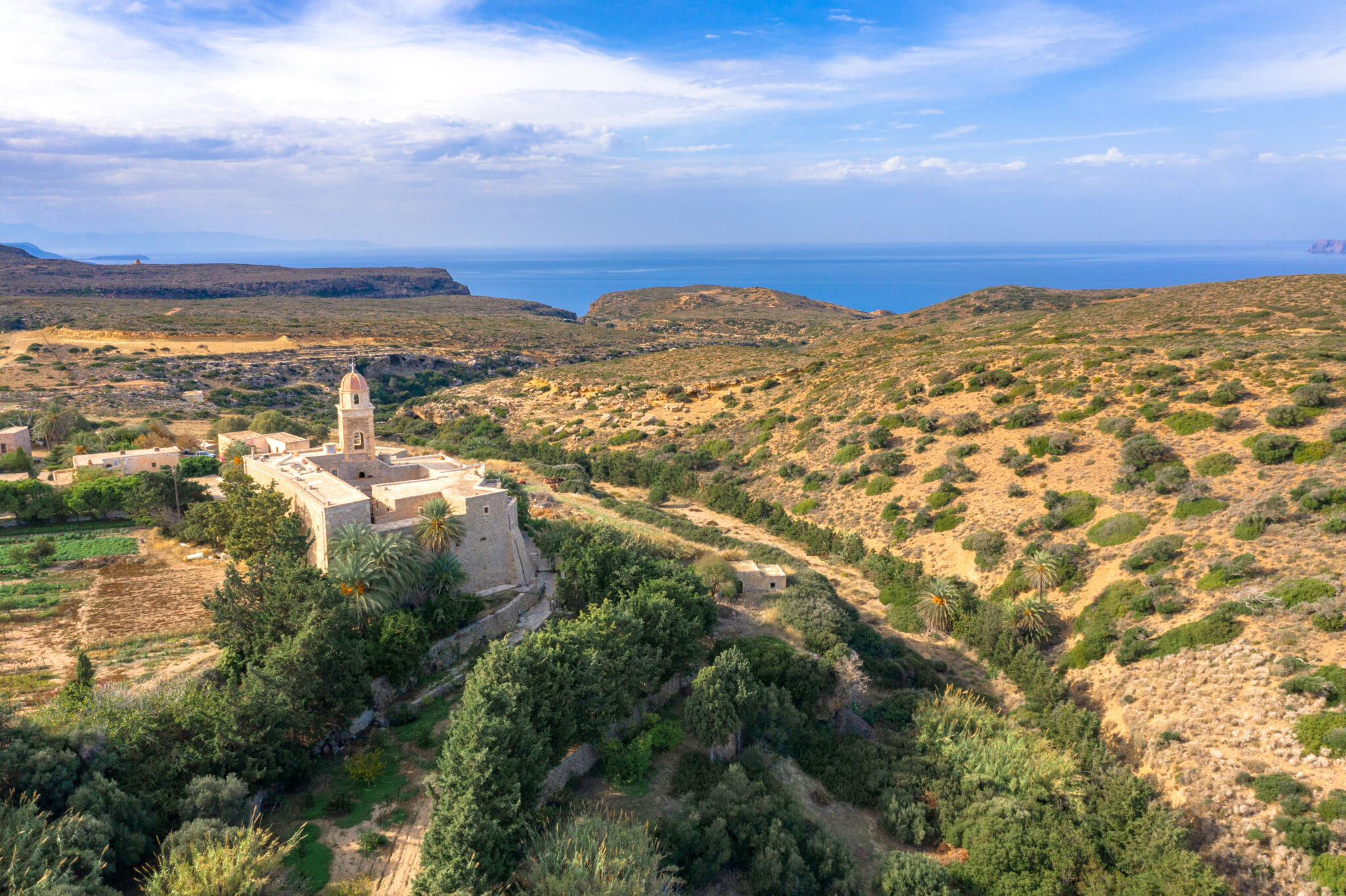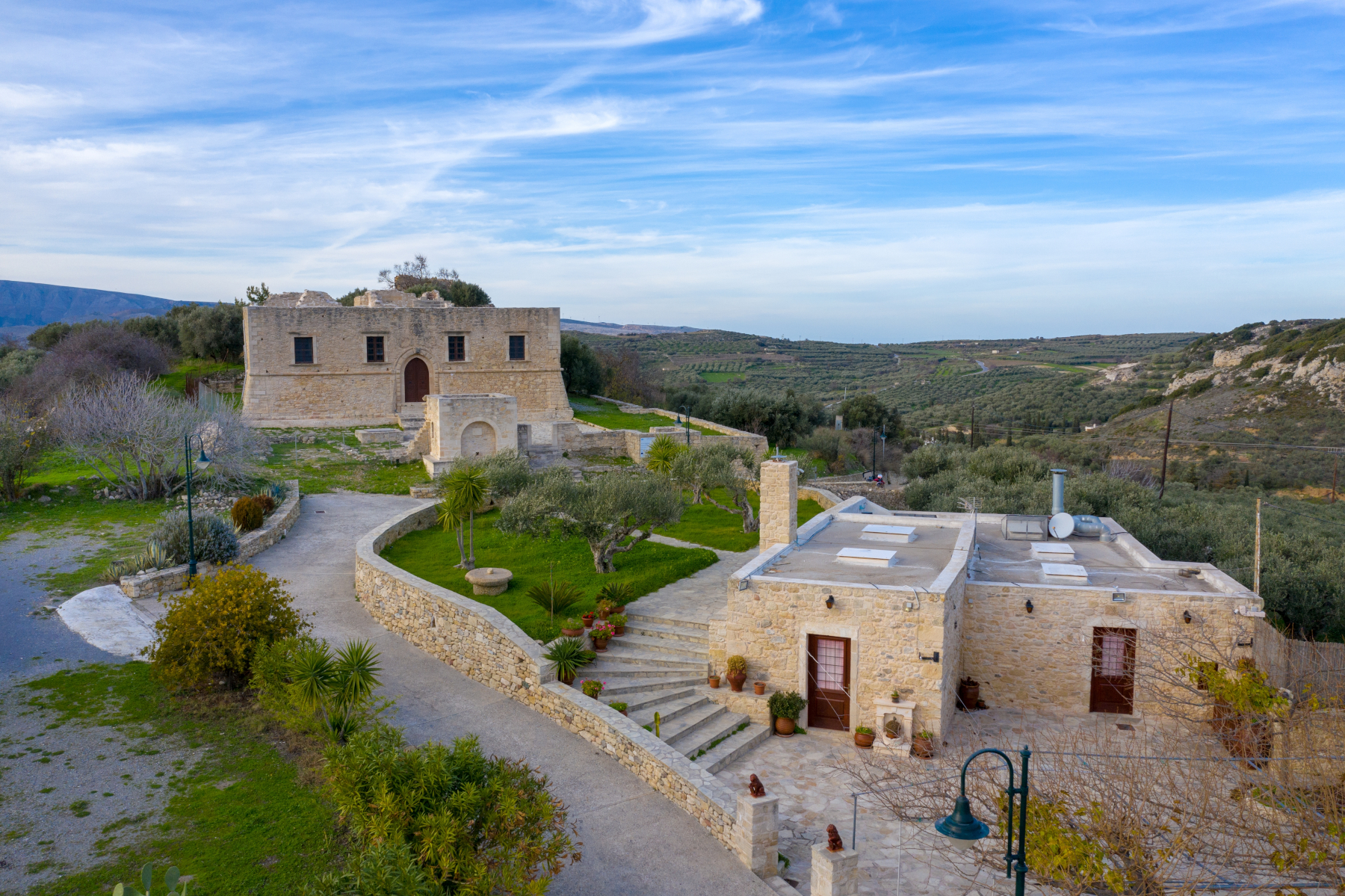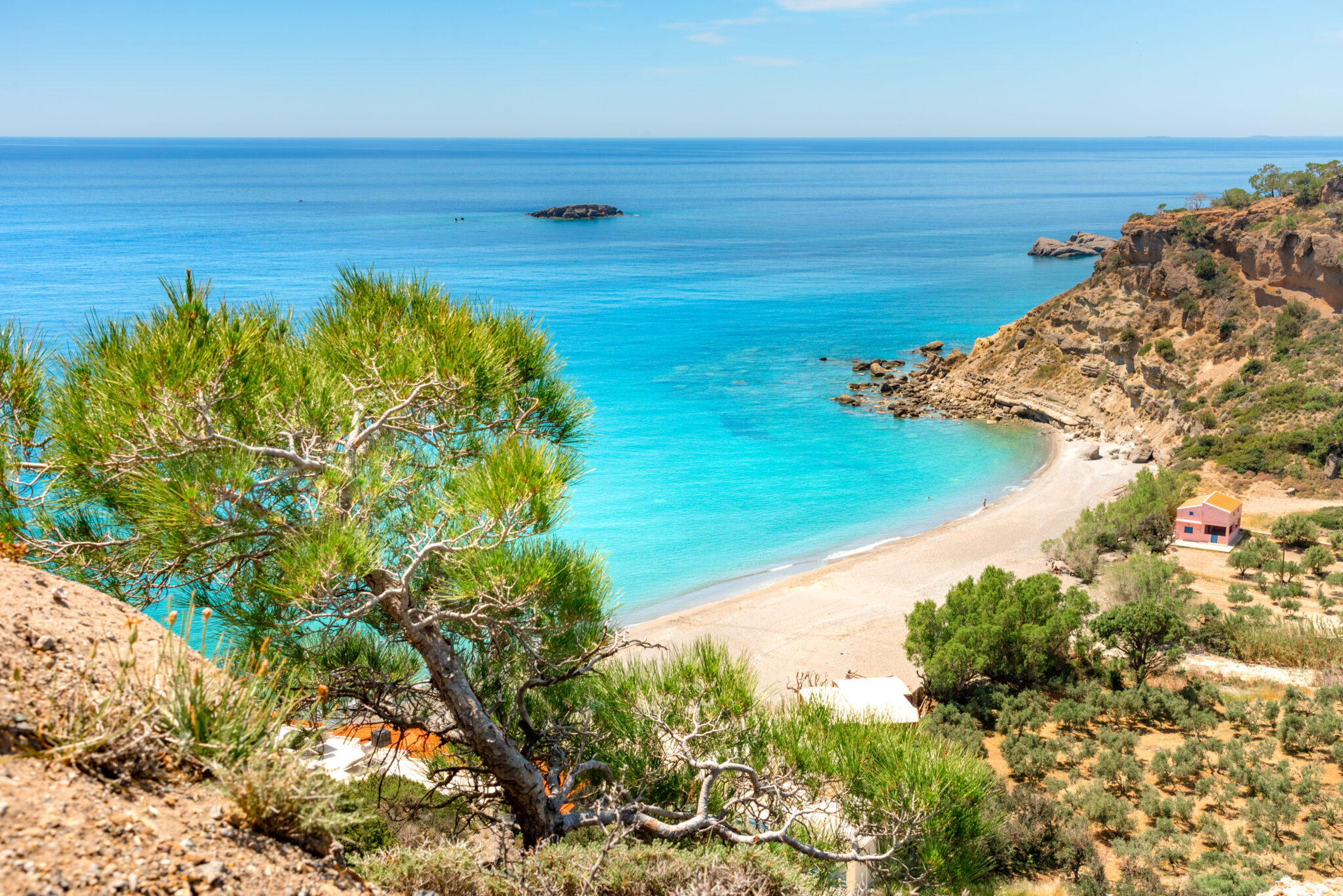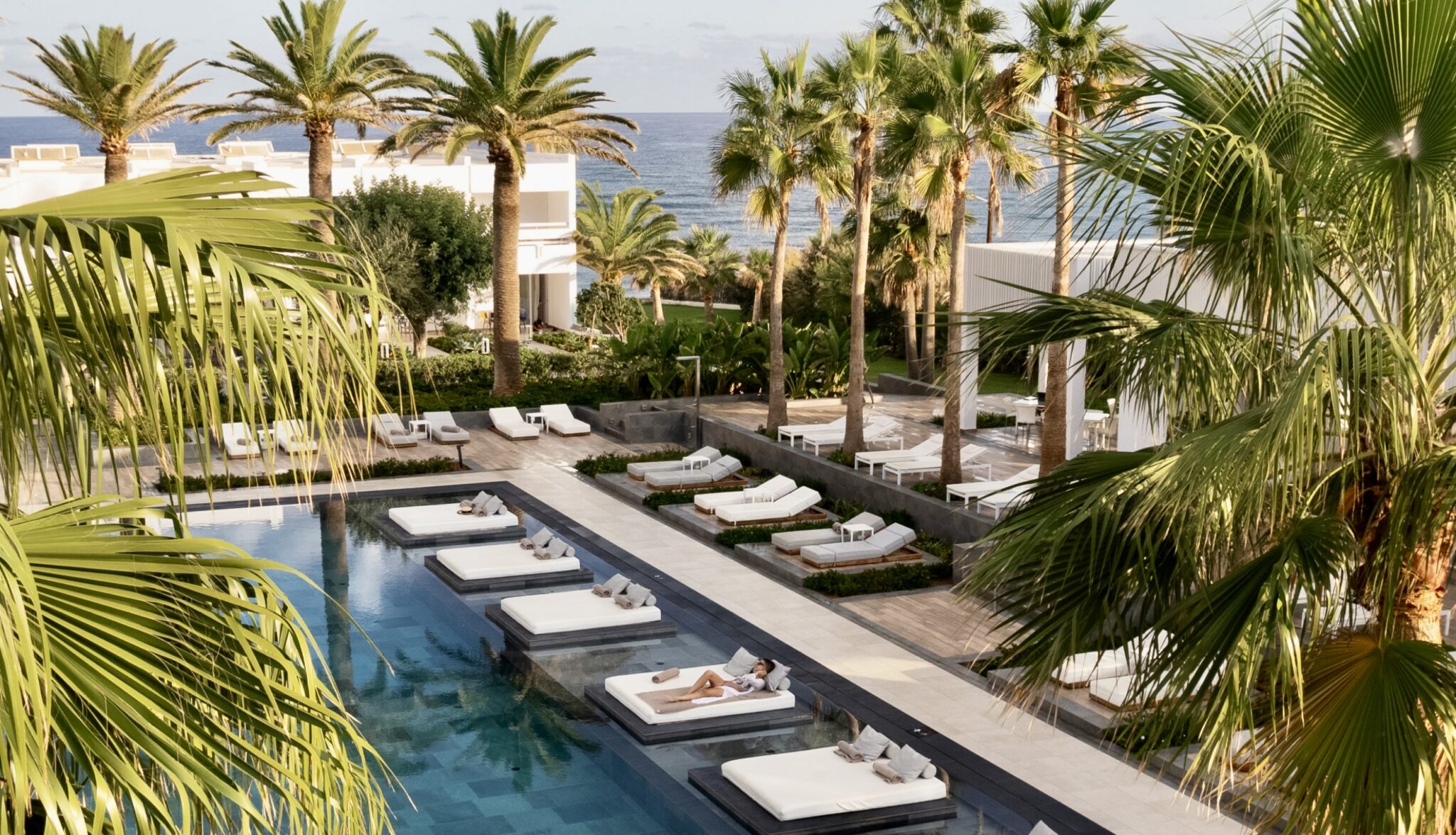Terroir and varieties
Lying on the eastern frontier of the Heraklion province and stretching towards Mount Dikti, Lassithi represents an intriguing blend of Cretan culture and viticulture. Here, the mountain range—fondly known as Lassithi Mountains—dissolves into the tourist hub of Ierapetra, where the terrain starts to soften its rough edges. The region, blessed with an exceptionally warm and arid climate, is the epitome of an ideal setting for organic viticulture, with the last rains often petering out in April.
The vineyards start at modest elevations and then play a captivating symphony between heights of 250 to 650 metres. This elevation, complemented by gentle maritime breezes, cools the vineyards and offers respite to the vines, helping them flourish. The Assyrtiko grapes that are grown in the Ziros region at elevations of between 600 and 700 metres, for instance, are harvested in mid-September, a full month later than those on the island of Santorini, which speaks volumes about Lassithis’ unique climate and growing conditions.
Today, the vineyards of Lassithi make up just under a tenth of the Cretan viticultural landscape, filled with a blend of drought-resistant plants and dry-farmed vineyards. The older vines twist and turn into bush-like forms, while the newer ones favour linear arrangements. The soils vary widely between calcareous and schistous, with higher proportions of sand and clay in the plateaus. Yields in the older, non-irrigated vineyards are strikingly low, resulting in concentrated and expressive wines.
The predominant red variety, Liatiko, creates wines high in alcohol, modest in acidity, gentle in tannins, and light in red color that rapidly evolves to a brick-like hue. The finest examples offer wines of finesse and a nuanced spicy character. Other red varieties, including Mandilaria, Kotsifali, Syrah, and Grenache, also grow here.
In terms of white grapes, Thrapsathiri stands as the county’s speciality, with Assyrtiko, Vilana, Muscat of Spinas, Plyto, Daphni, and Chardonnay producing outstanding sweet and dry wines. The most significant zone in terms of viticultural extension and quality characteristics is the PDO Sitia. In PDO Sitia, dry and sweet, red or white wines are produced from Liatiko, Mandilaria, Vilana, and Thrapsathiri grape varieties.
PDO Malvasia Sitia, established relatively recently in 2011, produces exceptional sweet white wines either from sun-dried grapes (naturally sweet wine) or fortified with distillate (vin doux naturel). The permitted varieties include Assyrtiko, Athiri, Thrapsathiri, Muscat of Spinas, Malvasia di Candia Aromatica, and Liatiko in white vinification. Finally, producers can use the broader PGI Lassithi and PGI Crete appellations.
Lassithi, therefore, offers a dynamic exploration of Greece’s storied wine history, its unique terroir lending a character that sets it apart from other wine regions. Its assortment of grape varieties and growing conditions ensures a vibrant range of wines, each capturing a distinct facet of this fascinating landscape in its own way. By tasting these unique wines, visitors connect with the rich terroir, deep history, and bright spirit of Lassithi.
Wineries and production methods
Situated within the monastic boundaries of the Toplou Monastery, is the eponymous Toplou Winery. The ethos of the winery resonates with the words of Archimandrite Ambrosius Skarvelis, the current abbot of the Toplou Monastery: “Creating a good wine is simple, provided you have the knowledge of over seven centuries of tradition and implement the love of Saint John the Theologian, from cultivation to bottling, with the blessings of Virgin Mary, Lady Akrotiriani”. This spirit and historical depth echo through the wines produced at the winery. In the 1990s, Abbot Filotheos Spanoudakis expanded the monastery’s vineyard and in 2012, a modern winery-distillery was born. Today, 200 acres are organically cultivated with the Liatiko, Vilana, Thrapsathiri, Mandilaria, Chardonnay, and Syrah varieties. From the estate’s labels, the white “Yerto” made from Thrapsathiri, with an aromatic profile of exotic fruits and mild acidity, the red “Lenos” from Liatiko, with a light body, mild tannins and aromas of pomegranate, sour cherry and leather, and the “Amaranton”, a fruity rosé from Liatiko, stand out. The winery is open for visits.
Address: Holy Monastery of Toplou, Sitia, phone: +30 28430-29636, info@ktimatoplou.gr, www.ktimatoplou.gr.
Inaugurated in 1997 by Nikolaos Papadakis, the Ampelourgein Winery has established itself as a purveyor of low-intervention wines, derived from the indigenous grape varietals of Crete. Its vineyards, punctuated across the mountainous terrain of Lassithi, scale from elevations of 850 to a breathtaking 1,150 metres. Remarkably, many of these vineyards have self-rooted vines exceeding a century in age, diligently nurtured through organic cultivation practices. The winery’s portfolio includes “Anthosmia”, a white wine crafted from Thrapsathiri, Dafni, and Moschato Spinas. The Thrapsathiri derives from self-rooted vines, while Dafni, growing at an impressive 1,100 metres, imparts mineral and herbal touches, and the petite Moschato lends a floral note. “Rodalos” is a rosé wine from Liatiko, noteworthy for its fresh acidity. The “Erotodiamataris” is a red wine made from Kotsifali and Mandilaria. Grapes are fermented and matured for 18 months in stainless steel tanks, followed by bottle ageing for 6 to 12 months. The winery operates as a visitor destination by appointment. Address: Schinokapsala, Lassithi. Contact: +30 28430-52468, ampelourgein97@gmail.com.
Embarking on its journey in 1994, the Economou Winery sprang to life when Yiannis Economou returned to Crete after an illustrious international career at wineries in Germany, Bordeaux (Château Margaux), and Piedmont (Italy). Economou primarily works with self-rooted vineyards of native varietals on the Ziros plateau. The yields are particularly low, leading to significant year-on-year variations in total production. The wines are aged for considerable periods before release – up to 4 years for white wines and 10 years for red wines. Liatiko and Assyrtiko are two of the main varieties at the winery. Notable amongst its labels is the red “Mirabello”, made from Liatiko and Mandilaria, the white “Economou Assyrtiko”, and “Economou Naturally Sweet” made from sun-dried grapes. Address: Ziros, Sitia, Lassithi. Contact: +30 6974433986, info@domaine-economou.com, www.domaine-economou.com.
Sights and points of interest on the wine routes of the region
Immersing oneself in the wine tasting experiences offered by Lassithi’s vineyards presents an excellent pretext for exploring the historic Toplou Monastery, Ziros, the Etiá Mansion, and the sun-kissed beaches of the Libyan Sea, such as Agia Fotia and Koutsounari.
Toplou Monastery: This is an austere, desolate landscape, the easternmost part of Crete. Home to a well-preserved monastery, its fortress-style architecture is safeguarded by a robust, 10m high wall, marking it as one of Crete’s most historic locations. Constructed in the 14th century and reaching its present form in the 17th century, the monastery was initially named Panagia Akrotiriani, owing to its proximity to Cape Sidero. The moniker “Toplou” was bestowed by the Turks, inspired by the cannon (top in Turkish) used to repel numerous invasions. The complex spans over 800 sq.m., with its 33m bell tower a distinctive aspect. As you enter the church, you’ll encounter a significant 2nd-century BC inscription – the “Magnesians’ Arbitration,” found amidst the ruins of ancient Itanos. This inscription bears witness to the resolution of a conflict between the ancient cities of Itanos and Hierapytna, with the aid of adjudicators from Magnesia in Asia Minor.
Ziros, Voila, and the Etiá mansion: Renowned for its post-Byzantine churches, such as Agios Nikolaos and Agia Paraskevi, the capital of Ziros (or Zirou) plateau’s fruitful landscape is an inviting destination, particularly if you plan to visit the Economou winery. Located near the village of Handras, the ruined medieval village of Voila is set atop a hill. Here, you can appreciate the three-story tower, Voila’s steadfast stone sentinel, with its impressive stonework. Close to Voila, you’ll find the deserted village of Etiá, home to a mansion known in maps as De Mezzo. However, locals persist in referring to it by its Turkish epithet, “Seragio Mansion.” Constructed in the 15th century by the influential De Mezzo family from Sitia, this mansion is one of the most significant surviving Venetian monuments in the Cretan countryside. After the departure of the Venetians from Crete, it served as the residence of the area’s Turkish leaders.
The Southern beaches: From Schinokapsala, where the winery is situated, a short drive will take you to Agia Fotia’s beach. Esteemed by locals and noted as one of Lassithi’s most stunning, it boasts an idyllic landscape enhanced by the Agia Fotini church, comprehensive facilities, fine pebbles, and pristine waters. Also nearby is the expansive beach of Koutsounari. This well-appointed beach provides water sports facilities, making it an exciting spot for aquatic enthusiasts. Swim in a series of splendid beaches to the east of the Aghia Fotia: the organised seashore of Achlia, with coarse sand and water sports facilities, Mavro Kolymbos, with fine pebbles, shade from salt cedars and tavernas, and Ammoudi beach, with fine golden sand and shallow calm waters, in Kalo Nero. There are also the beaches of Machairidi, Apigania, Koutsoureli and Makri Gialos, with a large, organised beach and all the necessary amenities. Meanwhile, at Kalo Nero, you’ll find a trio of adjoining pebble-strewn beaches with turquoise-green waters.




